 Your new post is loading...
 Your new post is loading...

|
Scooped by
nrip
|
Wearables, devices used to sense data and process it into information, are generating quite the buzz in healthcare these days. But down the line, does that buzz come with a sting?
In Wearable Tech News, Tony Rizzo reports wearable technology spending predictions of $50 billion by 2018. He also reports on a ground-breaking, glucose-sensing contact lens for diabetics that will be a “true solution for a very real medical problem that affects hundreds of millions of people.”
By 2016, wearable wireless medical device sales will reach more than 100 million devices, according to a Cisco blog on the future of mobility in healthcare. The importance of these devices is that healthcare professionals can access critical data via mobile apps before, during and after a patient’s hospitalization, thus boosting the speed and accuracy of patient care, the blog says.
The Age of Wearables has a few caveats, though – note that a doctor “can,” “could,” “may” or “potentially” be able to monitor a patient from a wearable, as the products are still under development. One product cites unpublished research as support, and another uses a modality, thermography, that the National Cancer Institute states has no additional benefit for breast cancer screening.
The new, intense focus on wearables is the engagement of the general public, both the ill and the well, and how they collect and transmit patient information to physicians and EHRs. This presents two challenges:
1. Are physicians prepared for this tidal wave of data and information? 2. What is the true cost of the data surge versus its benefits?
Like all healthcare information technology, wearables have huge potential – married to massive challenges.

|
Scooped by
nrip
|
The latest beta version of iOS 8 adds a pair of new health-tracking data points to the Health app and one of them won’t even need manual data entry or a wearable device if you have a newer iPhone.
Apple’s iOS 8 Health app can track dozens of health stats through other apps and devices, providing a full picture of your well-being. Now, it can track two more things and one of them can be measured by the iPhone itself.
AppleInsider installed the latest beta version of iOS 8, which was made available on Monday, and found two new functions for Health. First is a step counter card that works directly with the M7 co-processor inside the iPhone 5s — and presumably the next iPhones as well. Second is a new caffeine intake card. Since the M7 chip can’t track that, you’ll likely have to manually enter your caffeine data or use a third-party app such as Jawbone’s UP Coffee.

|
Scooped by
nrip
|
A newly published Apple patent application that details ways to improve a wrist-based pedometer could represent another piece of evidence pointing to an iWatch.
The application, “Wrist Pedometer Step Detection,” came out of the U.S. Patent and Trademark Office today. This is part of the standard patent process toward issuance. It details ways to improve step detection when someone is wearing a pedometer on a wrist.
In the patent application’s implementation, the pedometer might be able to “automatically determine that the pedometer is being worn on a user’s wrist.”
Pedometers, the application points out, are often attached to a user’s trunk – on the waist or pants or shirt pocket. A commonly used algorithm to measures steps, however, doesn’t work as well when the pedometer is on a wrist, because the arm’s movement can interfere with the measurement of acceleration.
Apple’s patent application would overcome this by filtering the measured movement or inferring steps from previous measurements, leading to more accurate step counts and distance estimation. Additionally, the document notes, “users do not have to specify where the pedometer is being worn” because the software will compensate.

|
Scooped by
nrip
|
The U.S. Patent and Trademark Office just granted Apple a patent for a new kind of biometric sensor that, unlike other wearables we've seen so far, connects to you via your ear. The patent applies to a sensor that can be embedded in a pair of earbuds or headphones, which then hoovers up wearer data like heartbeat, body temperature, or even how much you're perspiring when you hit the gym.
How the sensor intends to do that, however, isn't explicitly outlined in the filing. AsAppleInsider first pointed out, U.S. patent #8,655,004 concerns a "sports monitoring system for headphones, earbuds and/or headsets" to be used "during exercise or sporting activities." Originally filed in 2007, the patent suggests Apple has apparently been experimenting with new ways to cull together biometric data for quite some time now.
more at http://www.fastcompany.com/3026567/tech-forecast/apple-patents-fitness-tracking-earbuds-that-can-read-your-heartbeat

|
Scooped by
nrip
|
The concepts of “self-tracking” and “the quantified self” have recently begun to emerge in discussions of how best to optimize one’s life. These concepts refer to the practice of gathering data about oneself on a regular basis and then recording and analyzing the data to produce statistics and other data (such as images) relating to one’s bodily functions and everyday habits. Some self-trackers collect data on only one or two dimensions of their lives, and only for a short time. Others may do so for hundreds of phenomena and for long periods.
The tracking and analysis of aspects of one’s self and one’s body are not new practices. People have been recording their habits and health-related metrics for centuries as part of attempts at self-reflection and self-improvement.
What is indisputably new is the term “the quantified self” and its associated movement, which includes a dedicated website with that title, and regular meetings and conferences, as well as the novel ways of self-tracking using digital technologies that have developed in recent years.
A growing range of digital devices with associated apps are now available for self-tracking [1]. Many of these devices can be worn on or close to the body to measure elements of the user’s everyday life and activities and produce data that can be recorded and monitored by the user. They include not only digital cameras, smartphones, tablet computers, watches, wireless weight scales, and blood pressure monitors, but also wearable bands or patches, clip-on devices and jewelry with embedded sensors able to measure bodily functions or movement and upload data wirelessly.
In many of these devices global positioning devices, gyroscopes, altimeters, and accelerometers provide spatial location and quantify movement. These technologies allow self-trackers to collect data on their moods, diet, dreams, social encounters, posture, sexual activity, blood chemistry, heart rate, body temperature, exercise patterns, brain function, alcohol, coffee and tobacco consumption, and many other variables.
Read more at the original source: http://ieeexplore.ieee.org/stamp/stamp.jsp?reload=true&tp=&arnumber=6679313
|

|
Scooped by
nrip
|
Researchers from Intermountain Healthcare have developed a smartphone-based test for measuring salivary cortisol, which can help care providers understand the patient’s stress levels. The test can be performed at the point of care in just five minutes.
When someone feels stress, their body’s natural response is to release hormones, including adrenaline and cortisol, to help them deal with the “threat”. When cortisol is released, it increases glucose in the system, but also curbs nonessential functions including the digestive system, the reproductive system and growth processes.
When people feel stress throughout the day, thus releasing too much cortisol, it can lead to anxiety, depression, digestive problems, heart disease, sleep problems, weight gain, and memory and concentration impairment.
To perform the test, care providers use a smartphone’s camera to take a picture using the flash. From there, the image analysis app can identify the user’s cortisol levels.
“When cortisol levels are overlooked too many people suffer and die because of excess or insufficient cortisol,” lead researcher and Intermountain Medical Center Director of Diabetes and Endocrinology Dr. Joel Ehrenkranz said in a statement.
Ehrenkranz also believes this test will be especially helpful for people with diabetes.
more at http://mobihealthnews.com/34753/intermountain-researchers-develop-smartphone-based-lab-test-for-stress/

|
Scooped by
nrip
|
As the number of self-tracking health and fitness tools available to consumers continues to climb, a persistent question has been whether the data they collect might be useful to health researchers. Along with that: Are people who self-track comfortable sharing their data with researchers?
A new, must-read report from San Diego’s California Institute for Telecommunications and Information Technology (Calit2), funded by the Robert Wood Johnson Foundation, explores these and other questions.
Based on a survey with hundreds of self-trackers, a majority — 57 percent — said one critical assurance they would need before agreeing to make their self-tracked, personal health data available to researchers was that their privacy would be protected. More than 90 percent also said it was important that their data remained anonymous. Respondents said they’d be more comfortable sharing data if they knew it was only going to be used for “public good” research.
One open-ended survey that the report’s researchers posed to self-trackers found that 13 percent of respondents specifically mentioned an aversion to commercial or profit-making use of their data, according to the report. One respondent wrote: “It depends who gets it. Research using these data will be instrumental in the future of personal predictive services, but also for that reason are likely to be exploited by marketers and the politically short-sighted. Thus I would like transparency for who has access to my data.”
Among the almost 100 health researchers interviewed for the report, 46 percent said that they had already used self-tracking data in their research previously. Some 23 percent reported that they had already worked with digital health companies that offer apps or devices to consumers to track their health.
Overall, the researchers interviewed for the report were “generally enthusiastic” about the prospect of using self-tracking data in the future — 89 percent agreed or strongly agreed that such data would prove useful to their research efforts. Almost all of those researchers surveyed said that kind of data could answer questions that other data could not.
more at http://mobihealthnews.com/30979/health-researchers-see-unique-opportunity-in-self-tracker-data/

|
Scooped by
nrip
|
Wearables may be the tech du jour, but the next generation of devices and services needs to focus more on keeping users engaged in the long-term. These three factors, based on behavioral science, can help them do just that.
1. Habit formation. Sustained engagement depends on a device or service’s ability to help the user form and stick with new habits. Wearable devices have the potential, all too often unrealized, to make the process of habit formation more effective and efficient than ever before. The best engagement strategies for wearables move beyond just presenting data (steps, calories, stairs) and directly address the elements of the habit loop (cue, routine, reward), triggering the deep-seated psychological sequences that lead to the establishment of new habits.
2. Social motivation. To sustain engagement beyond the initial habit formation, a device or service must be able to motivate users effectively. Social connections are a particularly powerful source of motivation that can be leveraged in many creative ways. In addition to using social connections to influence behavior, social media and networking sites can be exploited to alter habits for positive outcomes.
3. Goal reinforcement. To achieve sustained engagement, a user also needs to experience a feeling of progress toward defined goals. Research shows that achieving several smaller goals provides the positive momentum necessary for achieving bigger goals. Wearable products and services that help people experience continuous progress can do so, for example, through real-time updates that are powered by big data and insights. Facilitating personal progress in this way leads to improved health, user satisfaction and long-term sustained engagement.
more at http://gigaom.com/2014/02/22/the-three-critical-factors-wearable-devices-need-to-succeed/

|
Scooped by
nrip
|
If fitness app developers can learn how to harness contextual sensor data, we'll all get healthier.
Google may be working on an application programming interface for fitness tracking in Android smartphones.
This new API could help Android smartphones automatically detect its users' daily motion and exercise routines to provide contextual information for users, but it could also help third-party developers build integrated fitness apps that are much more native to than Android’s current ways of tracking fitness.
The API was discovered by the unofficial Google Operating System blog, which noted the API is not yet available to the public or developers but could be in the next version of Android, or, more likely, an update to Google Play Developer Services.

|
Scooped by
nrip
|
Patient engagement, defined as the process of placing patients at the center and in control of their own healthcare, is becoming a chief healthcare priority
Concurrently, a number of national information infrastructure initiatives are targeting increased patient engagement and the design of health information systems that improve the availability of health information and integrate it in meaningful ways for patients. So far, these technology goals have been advanced primarily through the design of personal health records (PHRs), patient portals, electronic health records (EHRs), and health information exchanges (HIEs). However, we remain far from achieving the goal of truly engaging patients in their care.
Generation and exchange of health data with patients is a requirement for Stage 3 EHR meaningful use incentives. Patients are entitled to an electronically generated copy of the record of their encounters with providers.
Sharing provider-generated data with patients is expected to promote patient engagement and accountability, but our own experiences suggest that the data that are being shared are currently a mixed blessing. For example, one encounter report took the form of a 6-page document in which the vast majority of information was copied and pasted from previous encounters and in which there were several factual errors. The errors will be discussed with the provider during the next visit.
Certainly the report got our attention; whether empowerment will result remains an open question. On another occasion, although the visit itself had included making decisions about future treatment, the plan was not mentioned in the document, leaving the patient to rely on her own memory and notes. The National eHealth Collaborative Technical Expert Panel recommends fully integrating patient-generated data (e.g., home monitoring of daily weights, blood glucose, or blood pressure readings) into the clinical workflow of healthcare providers
Although patients want this type of involvement, we have only begun to address their wishes and concerns. In the next sections, we summarize the current status of several potential building blocks to achieving patient engagement goals and emphasize the role of the nurse informaticist as fundamental to the process.
more at the original : http://ojni.org/issues/?p=2848
|



 Your new post is loading...
Your new post is loading...






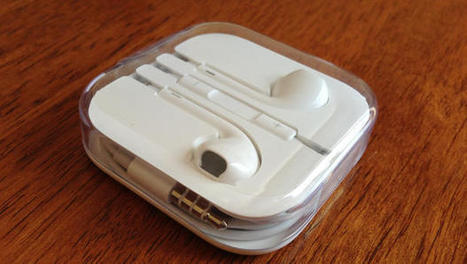
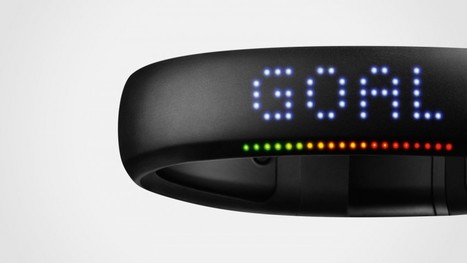
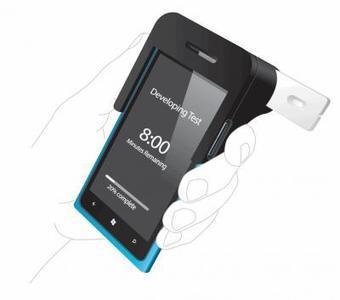
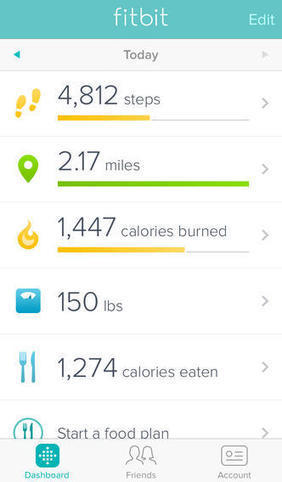

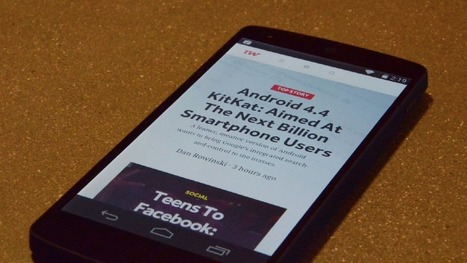








The answer to #1 from the doctors I have spoken with is a resounding no. The answer to #2 is a bit more complicated.
Interesting critique of wearables